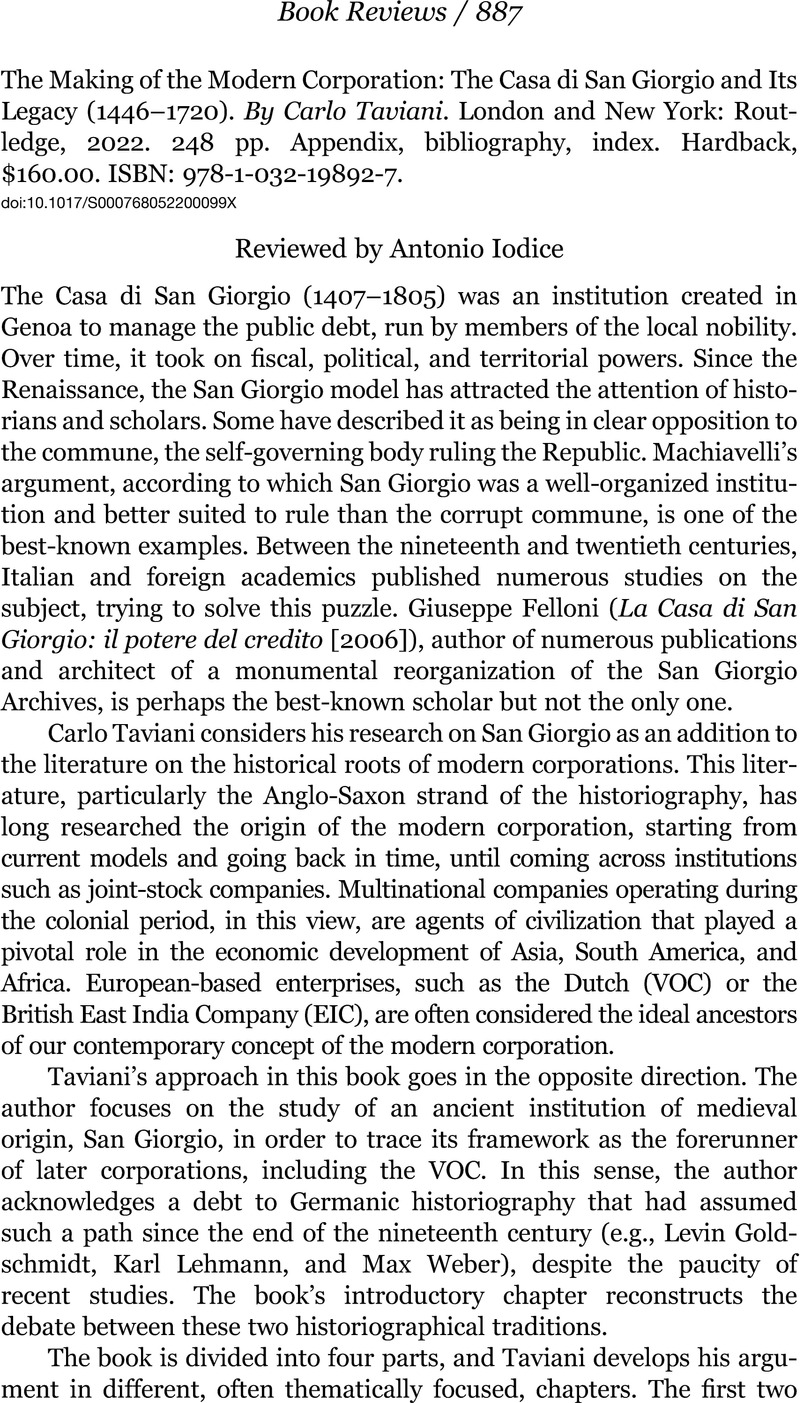No CrossRef data available.
Article contents
The Making of the Modern Corporation: The Casa di San Giorgio and Its Legacy (1446–1720). By Carlo Taviani. London and New York: Routledge, 2022. 248 pp. Appendix, bibliography, index. Hardback, $160.00. ISBN: 978-1-032-19892-7.
Review products
The Making of the Modern Corporation: The Casa di San Giorgio and Its Legacy (1446–1720). By Carlo Taviani. London and New York: Routledge, 2022. 248 pp. Appendix, bibliography, index. Hardback, $160.00. ISBN: 978-1-032-19892-7.
Published online by Cambridge University Press: 08 February 2023
Abstract
An abstract is not available for this content so a preview has been provided. Please use the Get access link above for information on how to access this content.

- Type
- Book Review
- Information
- Copyright
- Copyright © 2023 The President and Fellows of Harvard College


